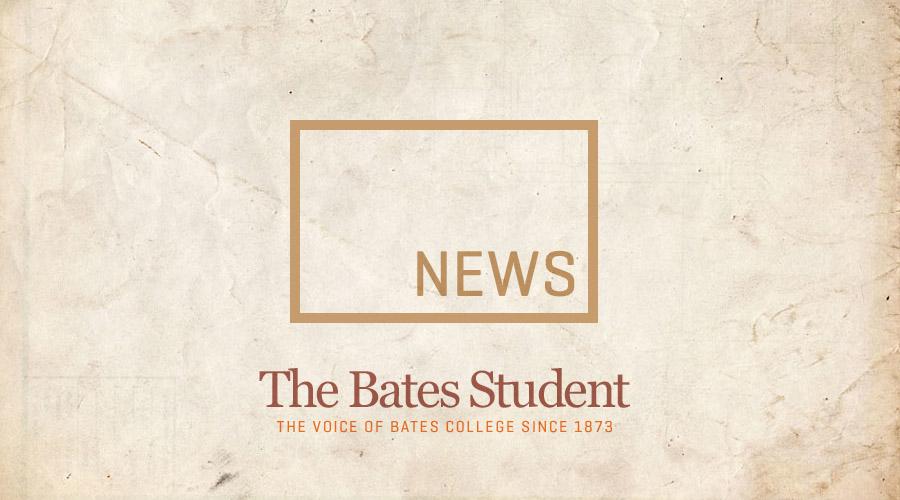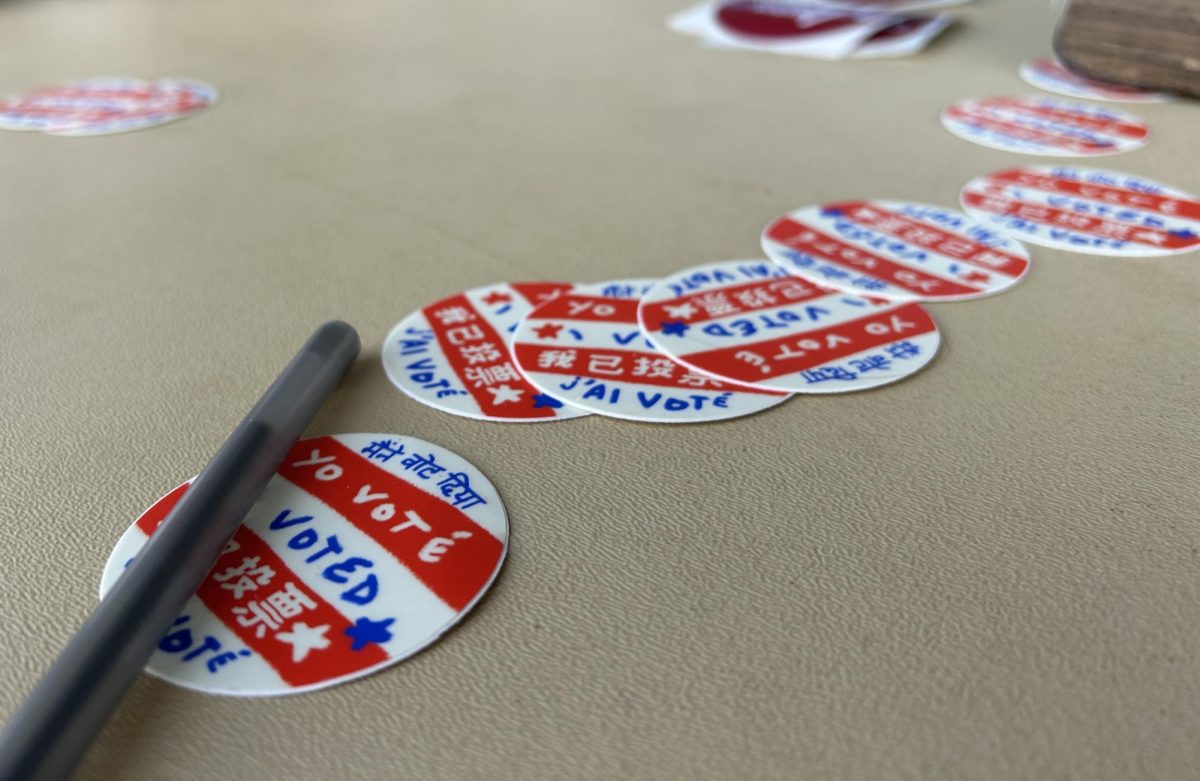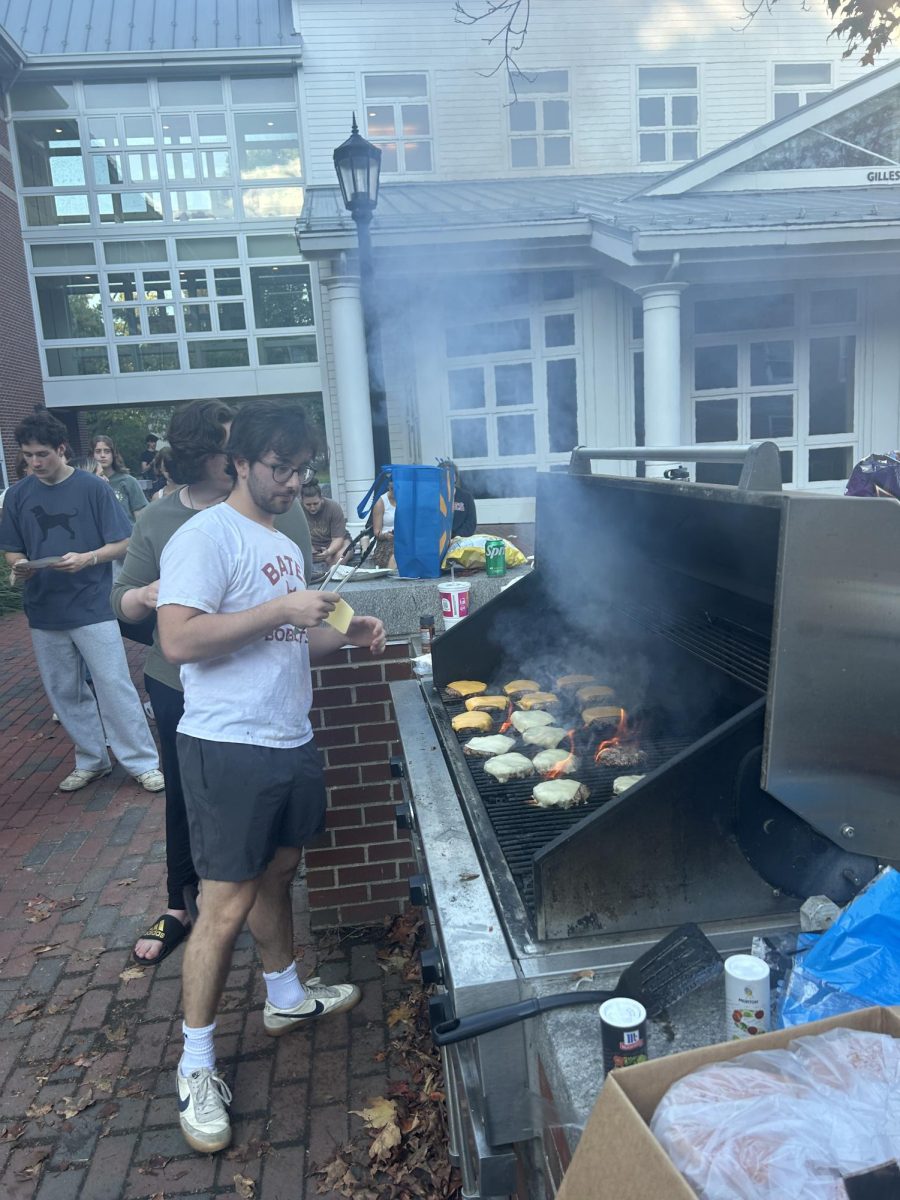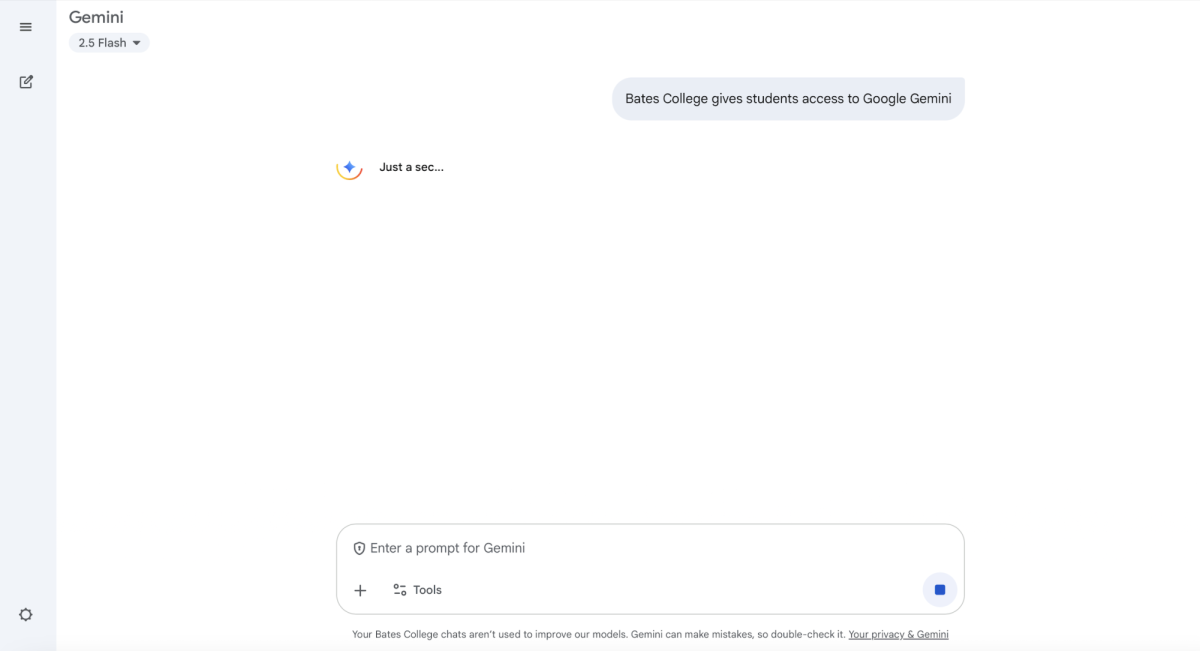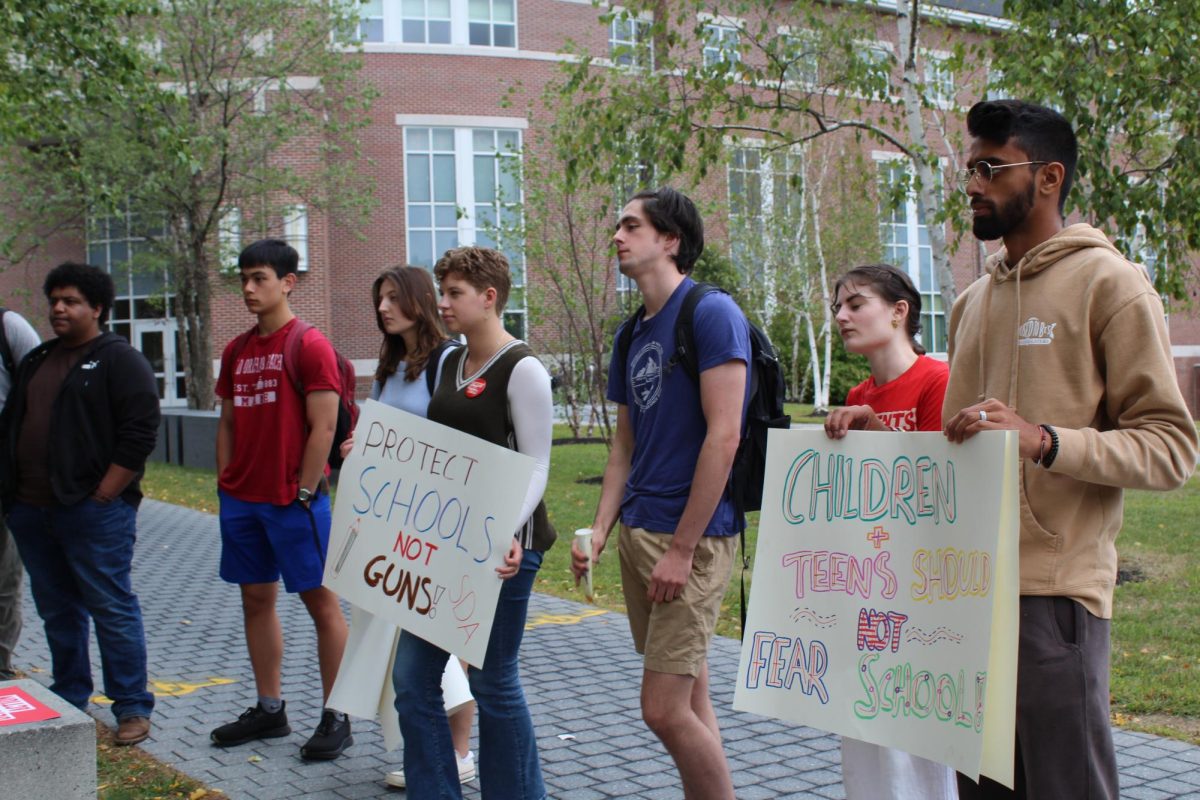At noon on Wednesday, Sept. 12, students approached Commons to find it transformed. A podium, an American flag, and a golden retriever replaced the typical spattering of penny boards and scooters. Max Gardner ‘20 stood at the center of the display, announcing his intention to run as a Democratic candidate for President as part of Associate Professor of Rhetoric, Film, and Screen Studies Stephanie Kelley-Romano’s course “Presidential Campaign Rhetoric.”
Gardner was chosen for the class last spring, after Professor Kelley-Romano selected fifteen students out of around thirty who had attempted to petition into the class. The course is viewed as a notorious seminar in the Rhetoric department, particularly for those majoring or minoring in Rhetoric.
The process lasts until November, when the mock campaign culminates in a vote by the student body and soon after, an inauguration. In the meantime, the class participates in simulations of what happens during presidential campaigns, which “helps [them] see what would happen in real life and really be immersed in the process,” says Lucy Faust ’20, who plays the role of Gardner’s spouse in his campaign. Some of these simulations include debates held during Back to Bates weekend, a town hall, and biographical videos, which will be released in the coming weeks.
Dylan Metsch-Ampel ’20, Campaign Manager of the Republican Party, added that one of the goals of the course is to help give the students a preview of what it takes to run for public office. He believes that this “promotes political involvement because it may encourage [them] to actually run in the future, to appreciate the reality of running a campaign, or both.” The mock campaign helps involve students across campus as voters whilst also instructing a smaller class to take a deeper look at the process of campaigning.
Although the Democrats are running as a more traditional ticket, Faust explained that Gardner was chosen not because he was male, but because their team felt he was most qualified and would be a great candidate. Important to their campaign are values of inclusivity; their goal is to be supportive of everybody in the community regardless of what they look like, or the identities they align with. “For us, that means that what we look like isn’t necessarily going to represent the policies that we support,” explained Gardner.
The Republicans, meanwhile, chose Julia Panepinto ’20 to run for the party. Her campaign kicked off at 3:30 p.m. on Sept.14 by the Puddle. During her speech, female students looked on, holding posters with the words “Women for Panepinto.”
Although the Democratic team may have an advantage since Bates is predominantly liberal, the Republican team hopes that utilizing a female candidate will help to dispel negative stereotypes surrounding their party.
Metsch-Ampel explained, “When our group met to decide campaign roles, Panepinto expressed that she wished to run. She is a great student and candidate, so we were all excited that she wanted to run,” and acknowledged that, “there are certain advantages to having our candidate be a woman.”
Competition aside, both parties expect that their mock campaign may have the potential to positively influence the political involvement of Bates students.
Faust hopes “that this campaign gets everyone at Bates excited to vote. November—no matter what party you align with—is going to be a really influential and important election, and traditionally many people don’t vote in the midterm elections.”
Regardless of who wins the class’s internal election in November, the mock campaigns could be able to increase the voter turnout for Bates students, an outcome even more impressive.


